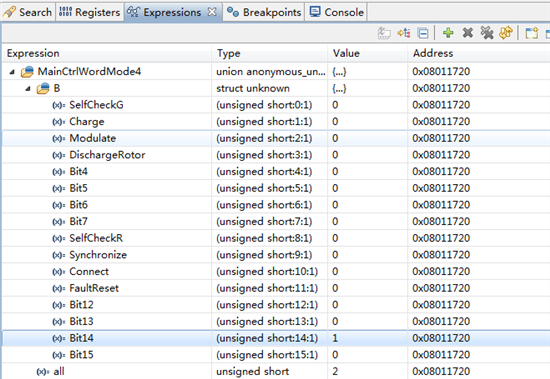ccsv5 compiler5.0.1 big-edian ARM
Does the compiler5 treat the first member of a struct as the MSB ,diffrent from ccs2 ?
Is there any instruction to make the first member to be LSB?How can I make the "0x0002"match to "Charge = 1",just like the struct is a nomal data?
I tried use RBIT and change the struct define.Any other ways?


